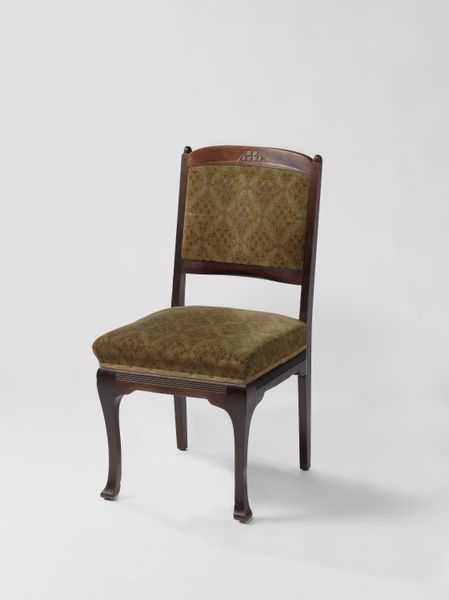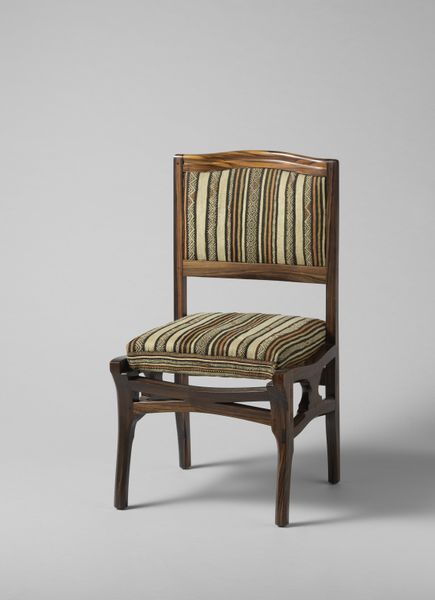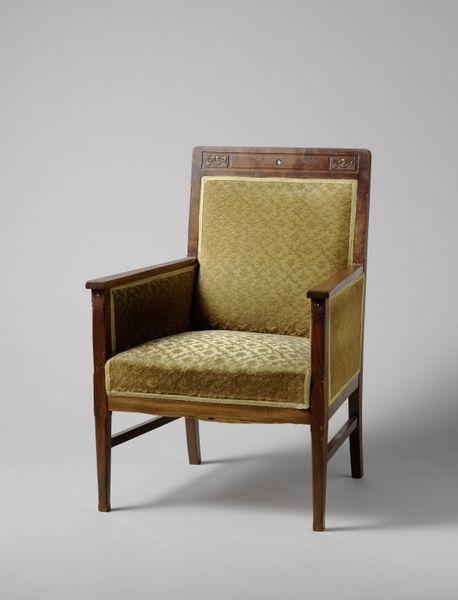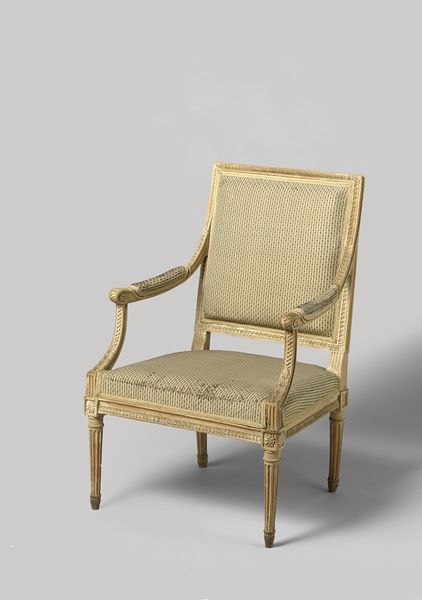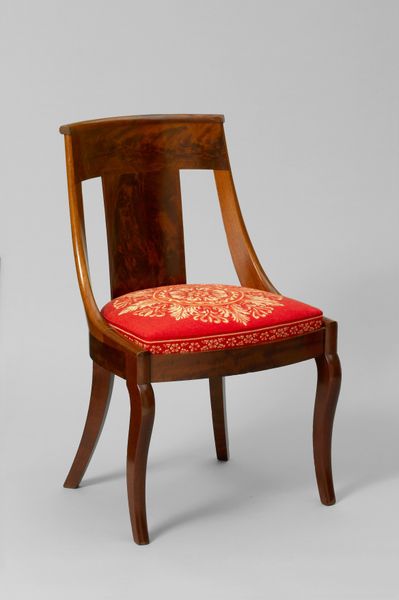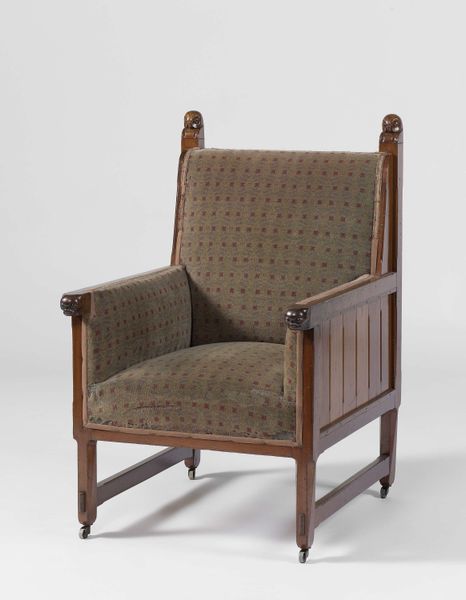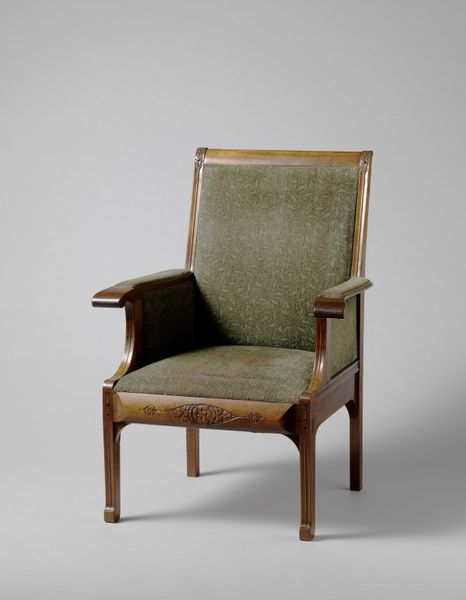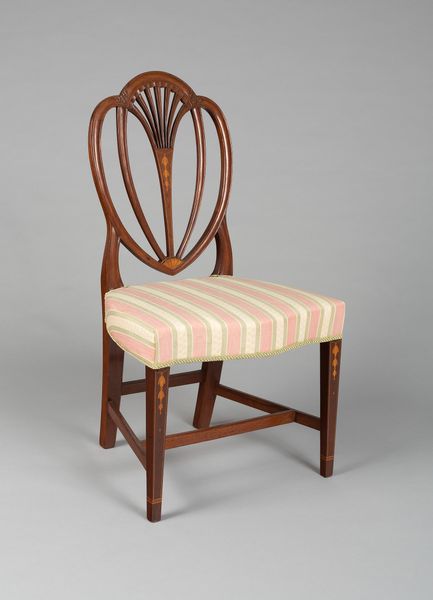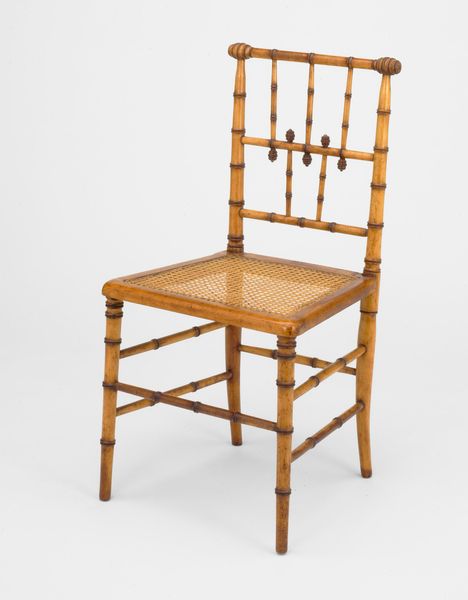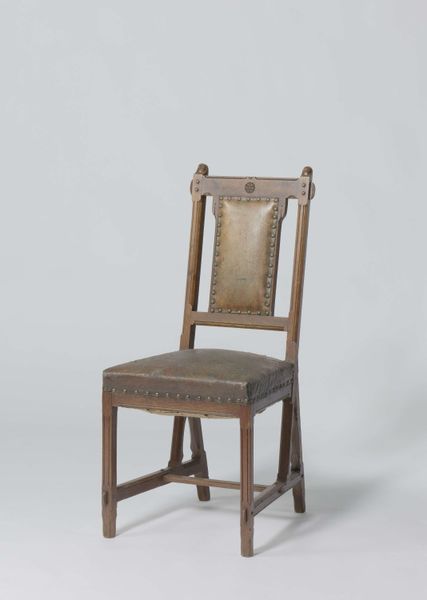
Stoel met originele bekleding van met geometrische motieven versierde trijp c. 1920
0:00
0:00
textile, wood
#
arts-&-crafts-movement
#
textile
#
geometric
#
abstraction
#
wood
#
decorative-art
Dimensions: height 109 cm, width 50.5 cm, depth 57.5 cm, weight 13.2 kg
Copyright: Rijks Museum: Open Domain
Editor: Here we have "Chair with original upholstery of tripe decorated with geometric motifs" from around 1920 by Piet L. Kramer. The chair feels quite upright and formal, with that dark wood frame. I'm intrigued by the patterned fabric—it's what really catches the eye. What aspects of the chair stand out to you? Curator: Immediately, one is drawn to the interplay between the rectilinear structure of the wood frame and the densely patterned textile. Consider how the artist utilises a limited palette, emphasizing earth tones, to create a visual harmony between the structural and decorative elements. Note the composition in terms of horizontality and verticality. How does the geometry function? Editor: The pattern does create visual interest! It is really detailed, which is amazing. How does it differ from more "functional" chairs? Curator: It departs from pure functionality through the conscious application of surface ornamentation. The tripe, with its geometric motifs, serves no structural purpose; it is purely aesthetic. What would you say about the relation between geometry and the decoration? Editor: Right, it elevates it beyond just being a seat! It feels very thought-out, carefully designed to be both useful and visually pleasing, unlike the sleek chairs we have these days. And thinking of the textile, does its abstract character indicate anything of a shift towards a new style? Curator: Precisely! It mirrors contemporaneous artistic movements embracing abstraction, moving away from strictly representational forms. Furthermore, observe the attention to craftsmanship, suggesting an allegiance to the ideals of the Arts and Crafts movement. Notice how the construction enhances its aesthetic presentation. Editor: I never thought about how much a chair could communicate. Thanks for pointing out all the ways form and function merge in this piece! Curator: Indeed, considering materiality, form and function enables an analysis of an artwork beyond simple utility, bringing to bear its philosophical purpose.
Comments
No comments
Be the first to comment and join the conversation on the ultimate creative platform.
